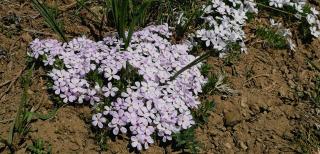

Know your type of soil and you’ll succeed in growing your plants. This will point out how to make it better and which species will fare best.
The major constituents of soil are clay, silt, sand and humus. The relative proportion of each constituent determines the type of soil. It can be clay, loam (for silt) or sandy. Its texture, pH, and water retention or heat retention properties depend on how these elements add up.
To know it in detail, it is possible to send a sample of your soil to a laboratory for analysis. Kits sold in in horticulture stores can let you estimate pH and how fertile the soil is quite easily, too. But most often, it is simply enough to knowingly observe the color, texture, and spontaneous growth (weeds) that grow there.
Easy to recognize, this is a heavy, sticky soil that cracks open in times of drought. Dense and compact when you pick a handful of it up, you can flatten it to form a circle without having it split. The flatter you can get the circle to be before it splits, the higher the clay content!
Field milk thistle, smartweed and thistles are among the plants that spontaneously thrive in this type of soil. The pH of the soil is generally neutral to acidic. To amend it, you would usually add compost and fertilizer. Spade it over before winter.
This is an intermediate type of soil, with an average texture, and it retains water well. Very fertile, it is neutral in terms of acidity. If you gather up a handful and flatten it out, it will split before you reach a thickness of 1/5 inch (5 mm).
This is good quality soil, and you can enrich it further still if you sow green manure before winter.
Light, raspy soil doesn’t retain water very well and heats up fast. It doesn’t clump together when you pick a handful up. Sandy soil will help produce early crops, whereas clay soil tends to be more favorable to late crops.
Anthemis and pansies naturally grow in sandy soil. This is poor soil, and it is sometimes acidic. Adding compost and fertilizer on a regular basis will help enhance it.

Many plants can adapt to chalky or limestone soil. Adding manure and tilling green manure into the soil will help make it better.
Laure Hamann
Read also: